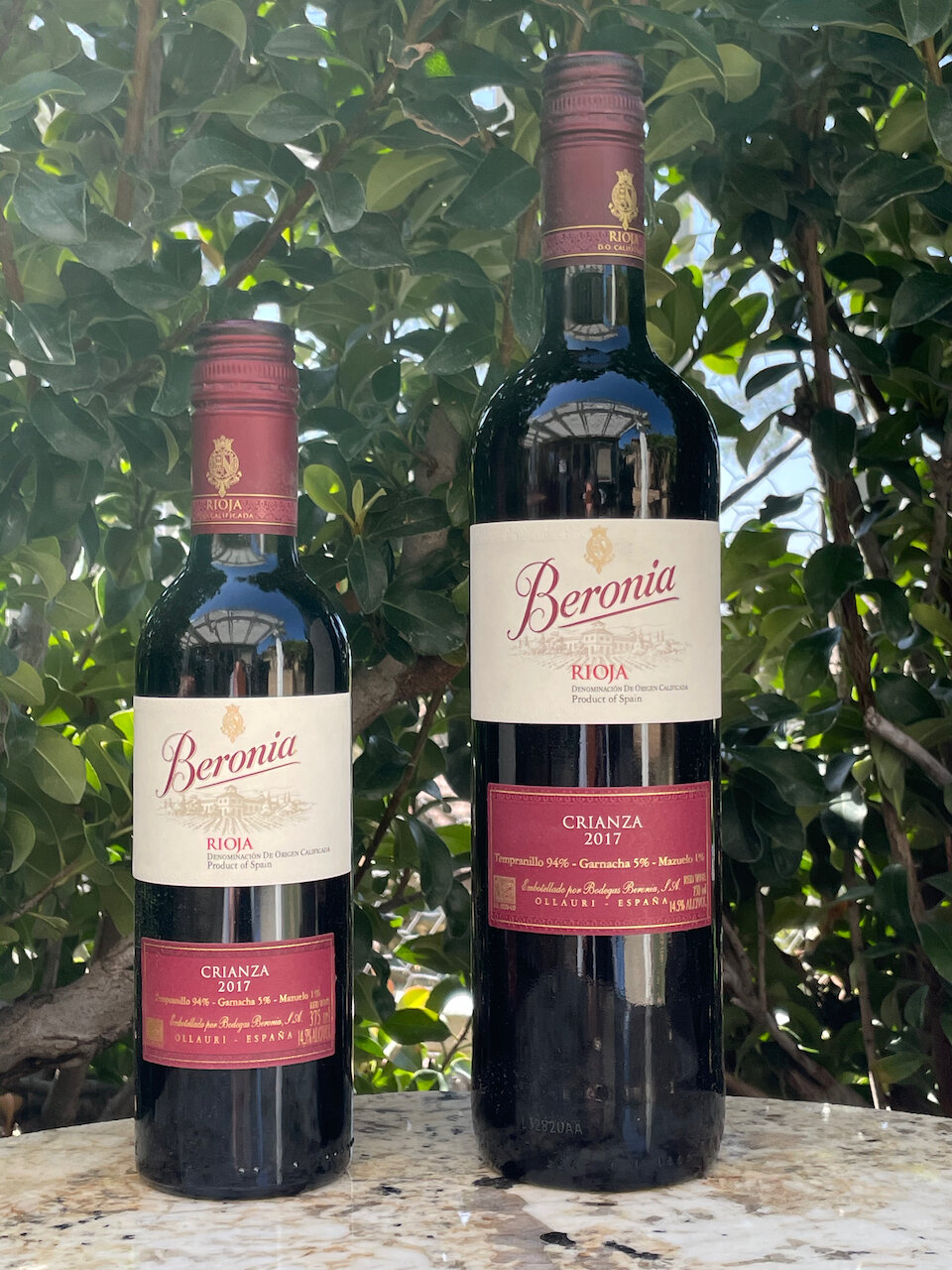2017 Beronia Crianza ($7.99 and $14.99)
This week’s Behind the Cork™ features two bottles of Beronia Crianza - the traditional 750 ml bottle and a 375 ml bottle that’s perfect for single serve meet-ups with friends at a distance. In this new era of socializing, the smaller bottle helps you take your own bottle at a manageable size.
This wine is imported by González Byass which is headquartered in Jerez de la Frontera, Spain. It is a family-owned collection of wineries that was founded in 1835 and spans across Spain’s most important wine producing regions.
This Beronia Crianza, from the Rioja region of Spain, is made from 94% Tempranillo, 5% Garnacha and 1% Mazuelo (a.k.a. Carignan). By Rioja regulations, a Crianza (“kree-ahn-tha”) wine must be aged for a total of two years with at least one year in oak barrels. In the case of this wine, its one year of barrel aging was done in barrels made of American oak staves and French oak ends. It was then bottled and left to rest for three months prior to its release.
This wine is medium ruby in color and has nice aromatics including red fruits (cherry and raspberry), fig, tobacco and wood. On the palate this Beronia Crianza has big red fruit flavors, medium tannin and a really nice lingering finish with a bit of crisp acidity. And, amazingly, I really believe that small addition of Mazuelo enhances the cherry/cranberry/raspberry flavor of this wine.
This Beronia Crianza Rioja is imported by González Byass USA and nicely fits as an affordable and attainable Behind the Cork™ wine of the week! Cheers!
Disclosure of Wine Sample Submission: I received these samples at no cost for review. The opinions expressed are entirely my own.
Samples Provided by Donna White Communications




